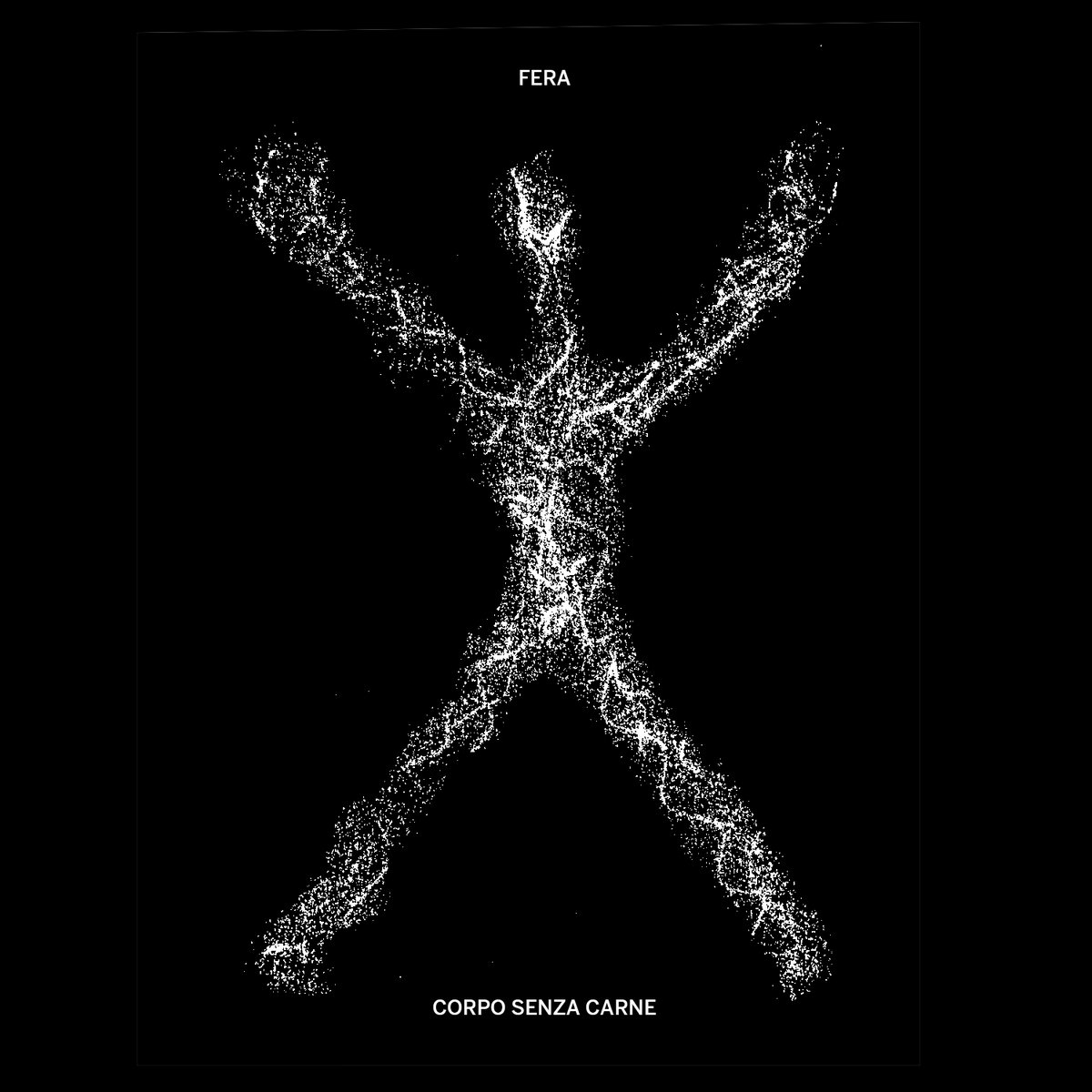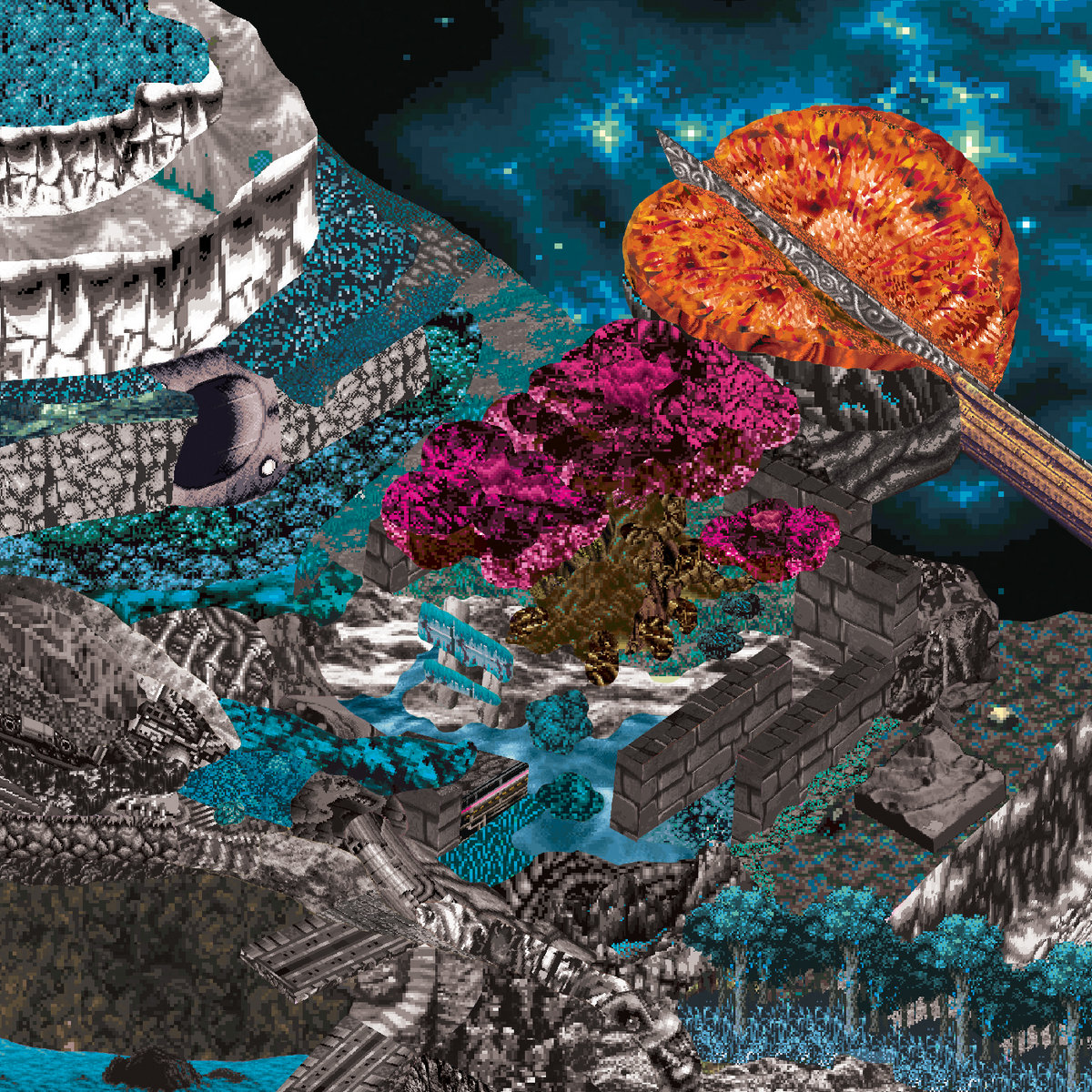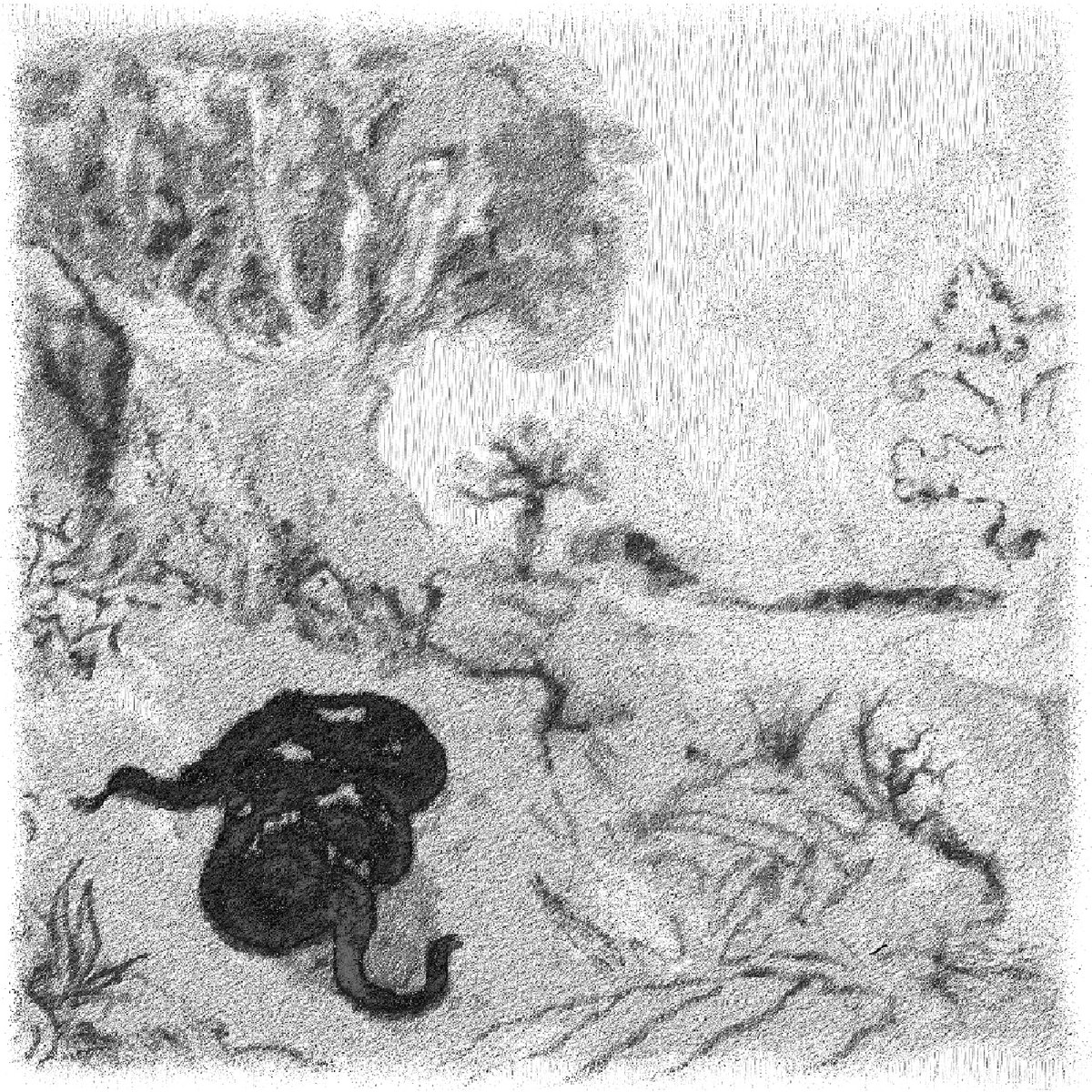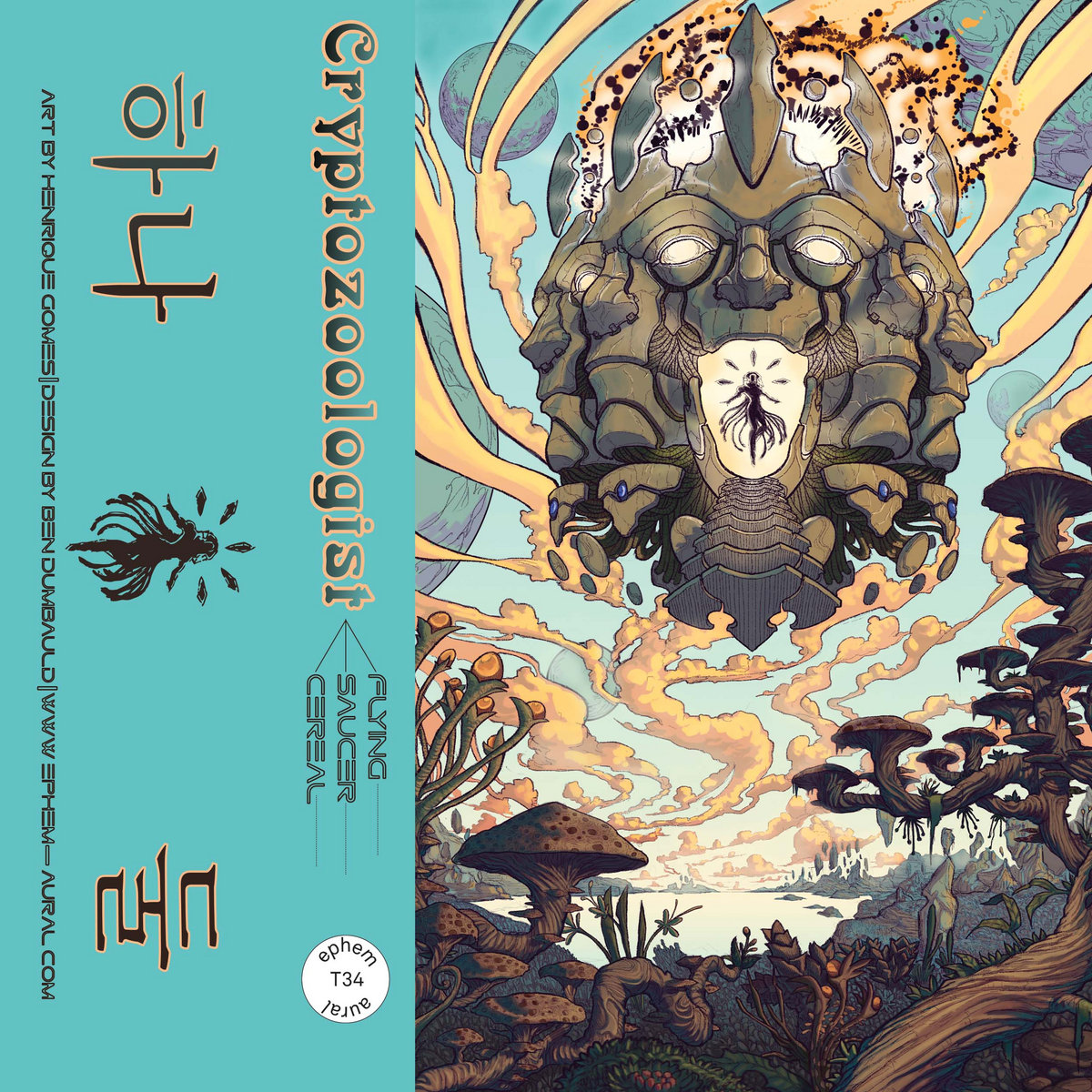Cassette Culture is a monthly column dedicated to exploring the various artists that inhabit the expansive cassette market. Drawing from bands and labels around the world, this column will attempt to highlight some of the best artists and albums from this global community.
 Fera
Fera
Corpo Senza Carne
(Maple Death Records)
Currently living in Bologna, but hailing from Southern Italy, Andrea De Franco is an electronic artist whose work veers between celestial meditation and industrial noise. As Fera, he melds the pulsing rhythms of techno with the burnished atmospherics of ambient music, concocting a revelatory sound that speaks as much to wide-open environments as it does to confined mental spaces. Corpo Senza Carne is his latest release, a collection of 11 tracks that strip away his usual synths and wiggling melodies in favor of something corporeal, something more aligned with the physical. And through these songs, he hints at a larger connection between sound and the movements of our own fleshy bodies, an acceptance that sometimes connections may be found through a disregard for the conventions of our individual physiques. Incorporating elements of ragged psych structures and post-punk informalities, he lays out a curiously engaging soundscape where epiphanies occur at the crossroads of synthetic and organic response, where music becomes just one more extension of a body riven by impulse and conscious decision.
 M. Geddes Gengras
M. Geddes Gengras
Expressed, I Noticed Silence
(Hausu Mountain)
Electronic auteur M. Geddes Gengras has pushed his circuital music in all manner of different directions, discovering new ways to attune these synthetic sounds to experiences both universal and intimate. Conjuring ambient moods amid the echo of clanging architecture, wrapped in forms of darkness and light, his albums are portraits of introspection, illuminated through instinct and a desire to immerse himself thoroughly in whatever musical headspace he seems to inhabit at any given moment. Expressed, I Noticed Silence is another cross-section of kosmiche exploration driven by his desire to create sounds that function as conduits for emotional revelation. He works alongside his brother, guitarist Cyrus Gengras, to shape these 6 tracks into a whirling construct of shimmering synths and shivering arpeggios. There are conversations held within the confines of these songs, musical dialogues that speak to his understanding of how tone and rhythm can support and elevate one another in unpredictable ways. Gorgeous, occasionally wistful, and always mesmerizing, Expressed, I Noticed Silence is another masterwork from Gengras that seeks to redefine the borders of electronic music.
 Slow Bell Trio
Slow Bell Trio
When the Circle was Closed
(Dinzu Artefacts)
Recorded last year in Chicago, When the Circle was Closed, the new album from Slow Bell Trio, is a mix of free jazz and experimental electronic tonality, awash in brassy flourishes and percussive arrythmia. As emotionally involving as it is fascinating, it crackles and stomps around like a music box slowly losing its mind. Built around the combined talents of Steven Hess, Keefe Jackson, and Mike Weis, the collection highlights both their ability to operate outside traditional musical histories and their innate familiarity with one another. Their work possesses an inherent spontaneity, allowing them to disregard convention in favor of instinct and impulse. But these songs aren’t simple musical thought exercises – they feel fully formed even when that form isn’t completely clear on first listen. As each track begins its process of deconstruction and adaptation, you can’t help but be in awe of their determination and the ways in which they realize those lofty ambitions. A mass of tangled melodies and branching divergences, When the Circle was Closed stands as a testament to the power of musicians operating at the height of their collective creativities.
 Social Union
Social Union
Fall Into Me
(Blackjack Illuminist Records)
New Zealand duo Social Union inhabit a world of darkwave visions and gothic musical architecture, a place where mysterious things move in the shadows and sound travels in undulating motions. Their new 4-track EP Fall Into Me is a sludgy dive into the craggier corners of new wave, post-punk, and synth-pop. Ethereal vocals weave in and out of inky rhythms and propulsive melodies, recalling the work of The Sisters of Mercy and Joy Division, but all wrapped up in a sleek and bombastic packaging that would have found good company on Siouxsie and the Banshees’ Kaleidoscope. The influences are clear, but Vanilla Martin and Luke Penrose don’t make music just so they can indulge in hero worship – these songs are adaptive, prone to sudden shifts, and are vivid portraits of angsty introspection cocooned within swirling bits of distortion. Often claustrophobic, and occasionally riddled with scraps of light, Fall Into Me is a dense tide of shivering basslines, buzzing synths, and cacophonous percussion – and it’s a pleasure to become lost in its turbulence.
 Memorabilia
Memorabilia
Memorabilia
(Future Shock)
Glasgow post-punks Memorabilia are quite happy lounging around in stark coldwave atmospheres where wiry melodies tumble across one another like broken pieces of obsidian. You can hear the echoes of Joy Division and Bauhaus creeping through the shadows of their new self-titled EP, a 4-track decent into dark impulses and angular structures. There are even moments when a poppier side to their work rises to meet you, signaling a desire occasionally break free from the gloom and doom that so effortlessly pervades their music. But for the most part, the band sticks to their brackish aesthetic, offering a spectral look into the heart of their influences and the ways in which they pare them down to their base elements. Eventually, you realize that the darkness isn’t quite so impermeable as initially thought but is simply used as a canvas against which they explore the cathedral heights of their communal talents. These songs are craggy, emotionally resonant, and tactile in a way that few bands would hope to understand as they engage with their listeners on a primordial level.
 Young Tribe
Young Tribe
Fields on Fire
(Third Kind Records)
The music of Russian artist Young Tribe explores the connections between the stark sinews of IDM, the bleak rhythms of industrial, and the emphatic pulse of techno, aiming for some vague space where the music refuses to be defined and is allowed to unravel at its own discretion. This thoughtful recombination of genres is at the heart of Fields on Fire, the latest release from Young Tribe, a daring interpolation of experience and influence that effortlessly pulls you into its tangled roots and branches. Dystopian at times, but also occasionally euphoric, these songs aren’t interested in soundtracking a solitary moment in time – they aim to cover much more sonic territory, a rhythmic expanse that speaks to the various genres’ futures as well as to the musical direction that Young Tribe may investigate in the future. Whether leading your body into jerky movements suitable for caffeinated nights or slowly mutating motions fit for gauzy early morning introspection, Young Tribe provides an appropriate backdrop on which we can move to the sudden synapses firing within the confines of our brains.
 Fantasma do Cerrado
Fantasma do Cerrado
Mapeamento de Terras a Noroeste de São Paulo de Piratiningaime
(Municipal K7)
Across Mapeamento de Terras a Noroeste de São Paulo de Piratininga, Brazilian musician Rafael Stan Molina (recording as Fantasma do Cerrado) wants to take you on a trip from São Paulo to Ibirá, with various stops along the way. Roughly translated as “Land Mapping Northwest of São Paulo de Piratininga”, the album takes you on an experimental journey through small villages, forgotten ruins, and wonders left in solitude in the wild wildernesses of Brazil. Focusing on field recordings and warped ambient sounds, Molina creates a living, breathing world where people, different geographies, and histories coexist and react to one another. These sounds form a bridge between the world we know and rest comfortably in and the one being presented through these songs, an often overlooked and sequestered place that feels timeless and remote. Buzzing synths and droning rhythms are offered as aural markers of a land unknown to most but captivating in its unpredictable landscapes and natural vistas. Molina suggests a mystery, and through the music, we are given a chance to unearth some measure of truth about its origins and its future.
 Manja Ristić
Manja Ristić
Him, fast sleeping, soon he found In labyrinth of many a round, self-rolled
(Mappa)
How do we view the natural world around us? Are we passive observers or active initiators, content to sit comfortably in familiarity, or do we possess a need to interact with the unknown? The Belgrade-born multimedia artist Manja Ristić looks into how we approach these questions and what it means for us as individuals when so many people don’t take the time to consider how we’re a crucial part of the balance our environment strives to maintain. Him, fast sleeping, soon he found, In labyrinth of many a round, self-rolled, named after a Gustave Doré illustration for John Milton’s Paradise Lost, features synths masquerading as insects and whale song used as connective tissue between Milton and Melville. “Maks Vanka” is dedicated to Croatian-American painter and muralist Maksimilijan Vanka and utilizes a hydrophone to gather grinding sounds, illustrating the inexorable decline of nature in the name of progress. Closing track “Dlana, noć” does provide some measure of relief and hope, as Ristić finds peace and the barest glimmer of optimism in the sounds of life all around her. Hopefully, we can do the same.
 Cryptozoologist
Cryptozoologist
Flying Saucer Cereal
(Ephem-Aural)
Experimental musician J Potz, working under the auspice of Cryptozoologist, creates a conversation between younger and older versions of himself on the recent reissue of Flying Saucer Cereal, a 2-track mashup of tape recordings conducted at various points in his life. GarageBand techno is spliced with droning compositions and dense rhythmic constructs while voices are chopped up and warped beyond recognition. It’s a fascinating glimpse into his mindset at these different times and acts as a sort of audio artifact of execution and influence. The music spread out over these two songs had been previously released as Unidentified Flying LP in 2014 and Choice EP in 2015, though the longform confabulations on this release provide invaluable context in analyzing the brilliant oddities housed within. Potz forms a series of musical snapshots here, each one so intricately designed and plotted out that the music never feels underdeveloped or rooted in any specific inspiration. These sounds feel lived-in, hypnotic, and are spiked with the ache and joy that comes from finding your way in the world.
Milanese engineer and electronic musician Alberto Boccardi lived in Cairo from 2015-2020, and he sought to document that period in his life in some way. As with many experiences in his life, he turned to sound and created Petra, a 5-track collection of ambient drones and electronic deconstruction that paints a mesmerizing portrait of noisy city life and the silences that we fail to notice existing inside of that cacophonous distortion of urban edifices. Working with longtime collaborator Cinzia De Lorenzi, a dancer and choreographer, Boccardi sought to introduce her vocals into his instrumental recollections. Through acts of rhythmic subtraction, he methodically striped away all the unnecessary elements of these tracks, leaving him a stark and genuine (and occasionally foreboding) look into what life was like for him in that sprawling city. Petra can be seen as the ending of one part of his life, as he moved back to Milan after Cairo, and the beginning of another. This transition, both emotional and geographical, can be heard on tracks like “Silice” and “Una Variopinta Immagine Divisa”, as he creates tangible associations with those places, giving Petra an appropriately shifting perspective on themes of change and personal growth.


